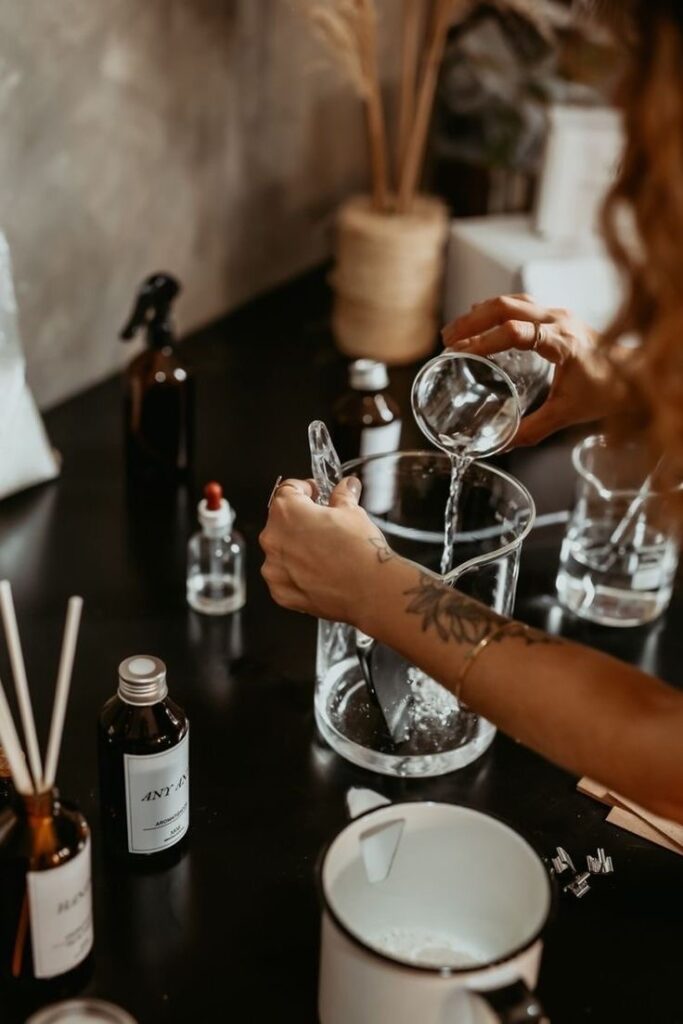Perfume, a fragrant symphony that dances on the senses, is an art form that has been cherished for centuries. The process of creating the perfect scent is a delicate balance of artistry and scientific precision, a marriage of creativity and chemistry.
It’s common to compare perfume to liquid poetry, and this connection is justified. It starts with the perfumer’s imagination, a variety of scents just waiting to be beautifully combined into a work of art. These experts, often known as “noses,” have the innate ability to identify and combine various odours, much like a painter choosing colours for a masterpiece.
Each fragrance tells a unique story by capturing feelings, memories, and environments. The selection of a fragrance theme—floral, oriental, or citrus—begins the process. The perfumer then painstakingly blends essential oils, resins, and aromatic components. It is similar to how music is created, when the top, middle, and base notes combine to create a symphony of scents.

While the aesthetic component of perfume making is definitely important, the scientific component is also important. The chemistry of scents must be understood by perfumers, as well as how various molecules interact and change over time. This technical know-how guarantees that a fragrance maintains its attractiveness throughout the day in addition to emitting a seductive perfume upon application.
Understanding the difference between volatile and non-volatile elements is essential to science. First-perceived top notes are primarily made up of volatile chemicals that quickly dissipate. Less volatile ingredients make up the middle and base notes, giving the fragrance an enduring, multi-dimensional character.
A major requirement is accuracy in measurement and blending. The entire essence of a smell can be altered by even a small change. Modern technology, such gas chromatography-mass spectrometry, helps perfumers examine and quantify scent components, making it easier to replicate and fine-tune fragrances with more accuracy.

The creation of scent has a long history that may be traced to early civilizations. For instance, the Egyptians used scented oils and resins for both personal decoration and religious activities. The art and science of creating perfumes have developed over time, with improvements in ingredient procurement and distillation techniques.
In the present day, the perfume industry melds traditional craftsmanship with state-of-the-art technology. Perfumers have an extensive palette of both natural and synthetic components at their disposal, enabling the creation of an infinite spectrum of fragrances. Additionally, there’s a growing emphasis on sustainability and ethical sourcing within the industry, with many perfumers adopting eco-friendly practices.

The artistry and science that go into making perfume are a monument to human ingenuity and resourcefulness. It’s a place where the abstract becomes concrete, where emotions are contained, and where memories are preserved. Making perfume is a true ode to our senses, a harmonious marriage of artistic inspiration and analytical precision.
Hence, the next occasion you choose to adorn yourself with your preferred fragrance, spare a moment to admire the delicate equilibrium between artistic craftsmanship and scientific precision that contributed to the creation of that diminutive flask of enchanting elixir.
Sources
- https://www.linkedin.com/pulse/have-you-ever-wondered-how-perfume-made-art-science-behind-jain?utm_source=share&utm_medium=member_ios&utm_campaign=share_via
- https://www.canterbury.ac.nz/news/2021/making-scents-the-art-and-science-of-perfume.html
- https://malibuapothecary.com/blogs/clean-candles/the-art-science-of-fragrance-explained




